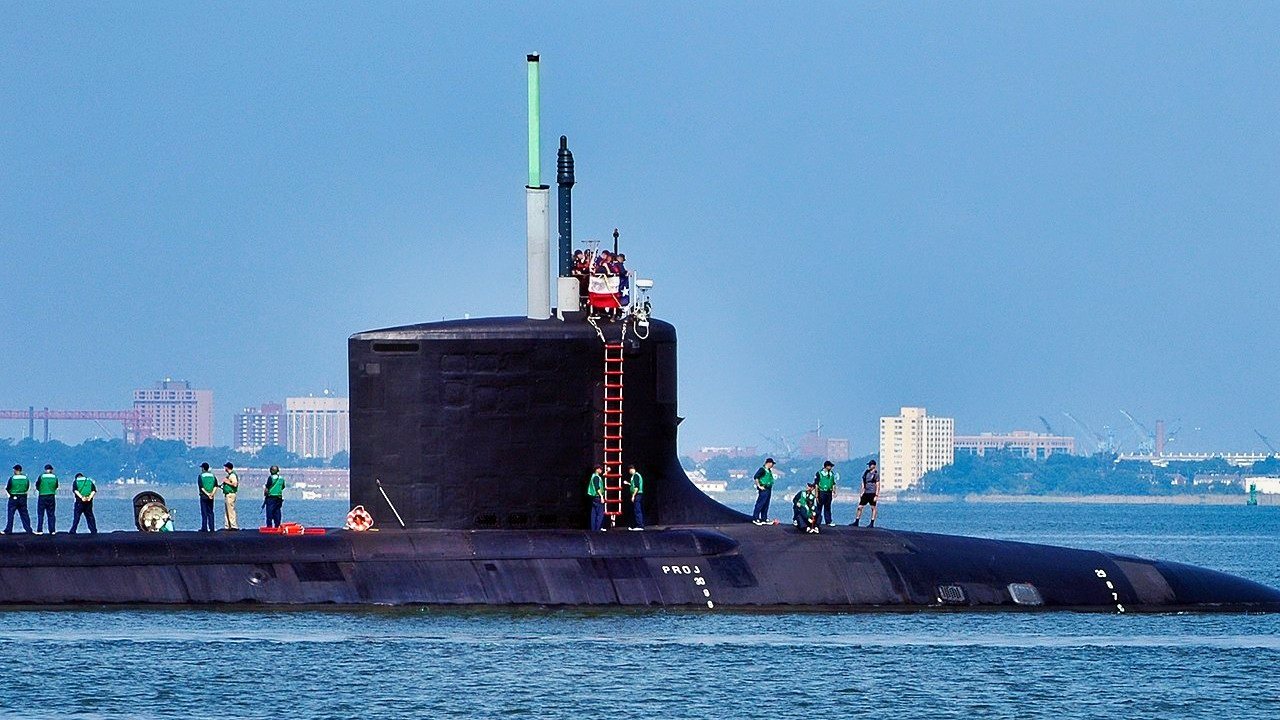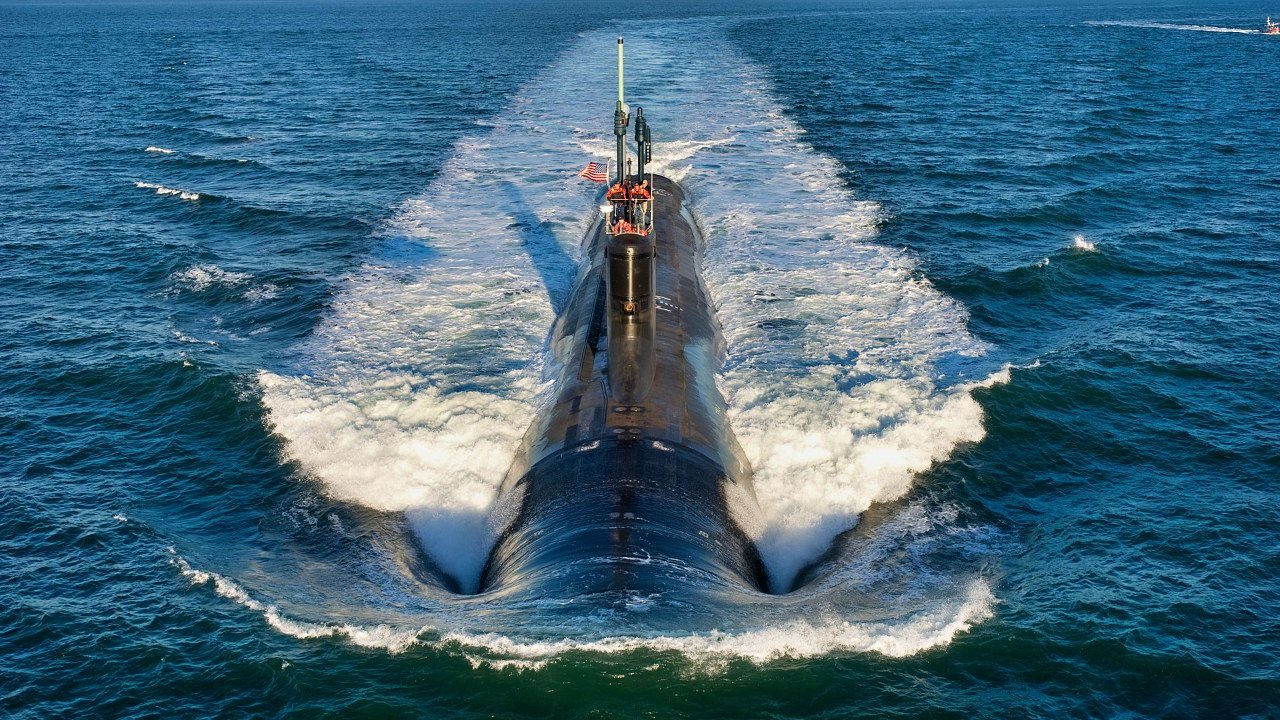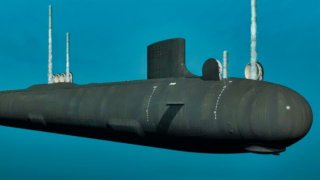AUKUS Nuclear-Powered SSN Submarine Could be a Drone Mothership
The AUKUS pact, an initiative involving the U.S., UK, and Australia, is advancing the development of the SSN-AUKUS, a nuclear-powered fast attack submarine. The design is nearing completion with expectations to finalize within a year or two.
Summary: The AUKUS pact, an initiative involving the U.S., UK, and Australia, is advancing the development of the SSN-AUKUS, a nuclear-powered fast attack submarine. The design is nearing completion with expectations to finalize within a year or two. Under Pillar 2 of AUKUS, there are plans to expand submarine capabilities by incorporating autonomous underwater vehicles (AUVs) launched and recovered via torpedo tubes. This innovation aims to enhance operational flexibility and effectiveness in undersea warfare. Additionally, collaborations are extending, with potential partnerships including Japan, to bolster regional security in the Indo-Pacific against rising threats like China.

SSN-AUKUS Design Nears Completion Under AUKUS Pact, Boosting Indo-Pacific Defense Capabilities
The design for the future nuclear-powered fast attack submarine being developed as part of the AUKUS pact – through its Pillar 1 initiative – has been described as already being in a "mature state" and it could be finalized in the next year or two. As part of Pillar 2, the capabilities of the SSN-AUKUS – and even other submarines in service – could be greatly expanded.
AUKUS in the Spotlight
The AUKUS pact, which was officially announced in September 2021, is focused on maintaining peace and stability in the Indo-Pacific and serving as a deterrent to China.
It currently involves in U.S. and the UK assisting Australia in acquiring nuclear-powered submarines. AUKUS also serves to increase cooperation on advanced cyber mechanisms, artificial intelligence and autonomy, quantum technologies, undersea capabilities, hypersonic and counter-hypersonic, electronic warfare, innovation, and information sharing.
The partnership is noted for primarily focusing on military capability, which distinguishes it from the Five Eyes intelligence-sharing alliance that also includes Canada and New Zealand.
The trilateral partnership could be expanded, as Canberra, London, and Washington announced earlier this month that there is consideration to work more closely with Japan. During last week's state visit by Japanese Prime Minister Fumio Kishida, the White House floated Japan's entry into the second pillar of the pact
Submarines as UUV 'Drone' Motherships
Part of the Pillar 2 effort for the AUKUS partnership would also be the development of underway battlespace capability – which could include the ability for the SSN-AUKUS and other submarines to launch and recover uncrewed underwater vehicles (UUVs) via a torpedo tube.
The AUKUS torpedo tube launch & recovery (TTL&R) solution is based around the Leidos/L3Harris Iver4 autonomous underwater vehicle (AUV). It could provide a way to enhance the capabilities of a submarine and allow it to deploy the small UUVs/AUVs without the need for a boat to surface to recover a vehicle and without the need to involve another platform.
"It gives an SSN its own offboard system," explained Rear Admiral James Parkin, the Royal Navy's director develop, at this month's Undersea Defence Technology (UDT) exposition in London, according to NavalNews.com.

Much like how "loyal wingmen" could serve along manned aircraft in contested airspace, AUVs could serve as undersea escorts in shallow, contested environments acting as scouts and countermeasure decoys. The small underwater drones could be modular with interchangeable capabilities depending on the mission.
As noted by NavalNews.com, delivery of an SSN capability for the Royal Australian Navy and Royal Navy under AUKUS Pillar 1 is a longer-term program, AUKUS Pillar 2 is set to meet the requirement to provide more tangible, targeted output – while also providing commonality in operations and processes.
Other UUVs in the Works
In addition to the work with AUKUS, the United States Navy has also been working on a torpedo tube-launched drone. As previously reported in December, the crew of the Virginia -class attack submarine USS Delaware (SSN-791) conducted a launch and recovery of a REMUS medium UUV during an operation dubbed "Yellow Moray."
The U.S. Navy had been testing a variant of the REMUS 600 military/civilian UUV, but it was launched and recovered via dry deck shelter with assistance from divers. The number of subs in the U.S. Navy's fleet that can carry a dry deck shelter is limited, while the actual launch and recovery procedure can be operationally cumbersome.
Launching and recovering a drone from a torpedo tube would make it accessible across the fleet – and to any current U.S. Navy submarine in service. It wouldn't require the deployment of divers when it is launched. The biggest challenge remains the recovery, which would seem to be a bit like threading a needle!
Yet, the efforts continue and AUKUS could help provide such a system for use by the U.S. Navy and its partners.
Author Experience and Expertise: Peter Suciu
Peter Suciu is a Michigan-based writer. He has contributed to more than four dozen magazines, newspapers, and websites with over 3,200 published pieces over a twenty-year career in journalism. He regularly writes about military hardware, firearms history, cybersecurity, politics, and international affairs. Peter is also a Contributing Writer for Forbes and Clearance Jobs. You can follow him on Twitter: @PeterSuciu.
You can email the author: [email protected].


